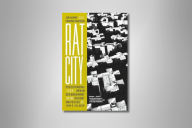You have /5 articles left.
Sign up for a free account or log in.
"Whoever cannot give to himself an adequate account of the past three thousand years," said Goethe, "remains in darkness, without history, living from day to day." That is an expression of a bedrock principle of liberal humanism, European-style. It takes the existence of the educated individual as its basic unit of reference -- its gold standard. But it also judges the quality of that existence by how much the individual has spent in acquiring a sense of the past. That expenditure also means, in effect, going into debt: You’ll never repay everything you owe to previous generations.
That outlook is, when you get right down to it, pretty un-American. It goes against the ideal of unencumbered self-creation that Emerson taught us –- in which we are supposed to throw off the burdens of the past, living always in the vital present. Fortunately, this is not hard to do. The first step is not to learn much history to begin with. (We are good at this.)
Even so, there may be an audience for E. H. Gombrich’s A Little History of the World, now available from Yale University Press, 70 years after it was first written. Imagine Goethe giving up the role of sage long enough to become a children’s author and you will have a reasonably good idea of the book’s content. It goes from prehistory up to the end of the (then-recent) Great War, with particular attention to ancient Greece, the Roman Empire, and the emergence of Judaism, Buddhism, Christianity, and Islam.
As for the style ... well, that is something even more remarkable. The tone is wry, at times, without ever being jokey -- a kind of light seriousness that is very respectful of its young audience. Each chapter is perfectly calibrated to suit the attention span and cognitive powers of a 10 year-old, without ever giving off a trace of condescension.
The effect, even for an adult reader, is incredibly charming –- and, indeed, instructive, at least for anyone with the occasional gap in that interior timeline. (Quick now: Who were the Hohenzollerns? And no, a vague sense that they were German doesn’t count.)
In his later and better-known role as art historian, Gombrich commanded a really humbling degree of erudition, but always with a certain generosity towards his audience. That combination is very much in evidence throughout his first book – one written in what must have been very trying circumstances.
It was Vienna in 1935. Gombrich was 26 and had recently finished his dissertation. (Writing one "was considered very important," he told a presumably incredulous audience at Rutgers University in 1987, "yet it didn’t take more than a little over a year to write.") His immediate job prospects ranged from the nonexistent to the merely terrible. Besides, he was Jewish, and the writing was on the wall, usually in the form of a swastika.
He managed to find part-time employment with a publishing company. He was asked to evaluate a book on world history for children in English, to see if it might be worth translating. He recommended against it, but offered instead to write one directly into German. It took him about six week, writing a chapter a day. The volume did quite well when it appeared in 1936, though the Nazis eventually stopped publication on the grounds of its "pacifism."
By then, he was in London, working at the Warburg Institute (a major art-history collection, where Gombrich in time became director) and aiding the war effort by translating German radio broadcasts into English. Before leaving Vienna, he had agreed to write another book, this one for adolescents, on the history of art. That project that grew into a rather more ambitious work, The Story of Art (1950) – long the standard overview of European art history, from which generations of museum tour-guides have cribbed.
He wrote it – along with his more monographic works on iconography and on the psychology of perception –- in English. When his Little History was reprinted in Germany in the mid-1980s, he wrote an afterward for it; but he turned down offers to have it translated into English, preferring to do that himself, and to make some necessary revisions. It is not clear from the edition now available from Yale just how far Gombrich got with that effort at the time of his death in 2001. (The title page gives the translator as Caroline Mustill.) But he did add a postscript called "The Small Part of the History of the World Which I Have Lived Through" – summing up the 20th century from World War I through the end of the Cold War, and trying to put as optimistic a spin on that record as possible.
The preface by Leonie Gombrich, his granddaughter, quotes some introductory remarks he prepared for the Turkish edition. His Little History, he wrote, "is not, and never was, intended to replace any textbooks of history that may serve a very different purpose at school. I would like my readers to relax, and to follow the story without having to take any notes or to memorize names and dates. In fact, I promise that I shall not examine them on what they have read."
But the book has a strong and serious pedagogical intent, even so. And it comes very directly from Goethe, whose work Gombrich read incessantly as a boy. Upon receiving the Goethe Prize in 1994, Gombrich said that it was the author’s life and writing that taught him "the consoling message ... of a universal citizenship that transcends the confines of nationhood." That seems very much the point of the Little History, which tries to squeeze all of global history into just under three hundred easily read pages –- and I strongly suspect it was just that cosmopolitanism that the Nazi censors really loathed.
Of course, there are gaps and oversights. One that is really troublesome is how the entire history of the Atlantic slave trade is reduced to the dimensions of a brief reference to the Civil War in the United States. This has the effect of making it seem like a distant and cruel episode in the New World, rather than what it really was: A vast and centuries-long process that enriched parts of Europe, depopulated parts of Africa, and anticipated every aspect of totalitarianism possible before the rise of industrialization and mass communications.
Not that Gombrich leaves the history of colonial atrocity entirely out of the picture, especially in recounting the conquest of the Americas: "This chapter in the history of mankind is so appalling and shameful to us Europeans that I would rather not say anything more about it."
In many ways, then, the book is at least as interesting as the specimen of a lost sensibility as it is in its own right, as a first introduction to history. Gombrich later spoke of how much he had been the product of that almost religious veneration of culture that prevailed among the European middle class of the 19th and early 20th centuries.
"I make no great claims for the universality of that tradition," he said during a lecture at Liverpool University in 1981. "Compared to the knowable, its map of knowledge was arbitrary and schematic in the extreme. As is true of all cultures, certain landmarks were supposed to be indispensable for orientation while whole stretches of land remained terra incognita, of relevance only to specialists..... But what I am trying to say is that at least there was a map."








